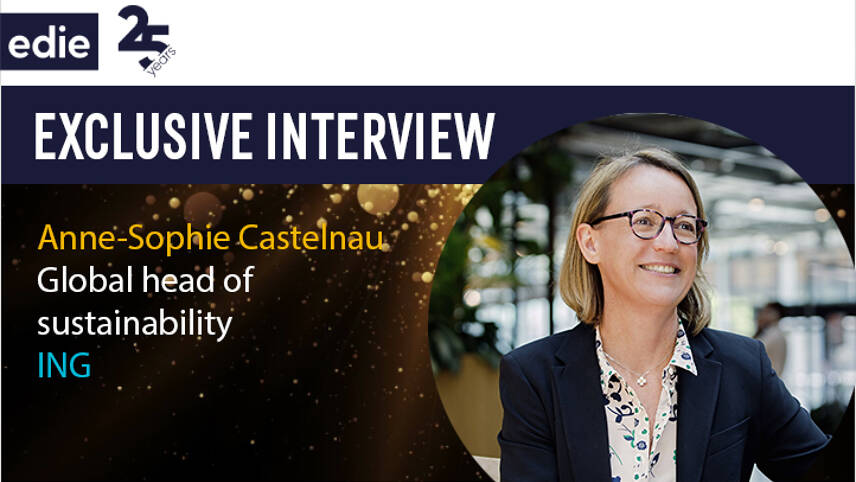Register for free and continue reading
Join our growing army of changemakers and get unlimited access to our premium content

The finance sector was slow to embrace climate action. Risk-averse by nature, actors within the sector have only just started rolling out initiatives and frameworks to future-proof portfolios and assets against climate-related risks. In fact, it wasn’t until 2019 that green finance finally started becoming mainstream.
There have been a few pioneers in the sector, however, including Dutch banking giant ING. Last month, ING updated its climate policies in a bid to further restrict financing to the oil and gas sector, as it continues its efforts to align with International Energy Agency’s (IEA) ‘Net-Zero Emissions by 2050 Roadmap’.
The announcement builds into ING’s wider approach to climate action. ING announced back in 2018 that it would steer its portfolio towards a 2C trajectory – the less ambitious of the two warming pathways outlined in the Paris Agreement. It launched a new set of metrics and processes, known as Terra, to track the decarbonisation of its financed activities.
The Terra approach received an update last year. The new strategy confirms new emissions goals for financed activities in the nine high-emitting sectors it regards as a priority under Terra. Eight of them are badged as aligned with net-zero on a 1.5C pathway, with shipping being the only exception at present. Across the eight sectors, ING has more than €330bn of activity.
Speaking exclusively to edie, the company’s global head of sustainability Anne-Sophie Castelnau explains how the risks and opportunities facing the sector continue to evolve as a result of both action and inaction.
“Our Terra approach is based on data that is publicly available and we are therefore quite comfortable because what we are achieving is measurable and we can approach our climate impact very transparently,” Castelnau tells edie.
“But as more organisation talk about [climate action] then challenges can come in many shapes and forms, including greenwashing. One thing we can try to do is put many processes and procedures in place and comply with regulations as much as possible, but when those regulations aren’t quite clear or specific enough, then challenges emerge.”
Much has been said about unscrambling the “alphabet soup” of ESG frameworks.
One of the key challenges facing ESG finance and investing is that many companies, ratings agencies and investors are using different definitions of ESG and different methodologies to assess performance across each of the three pillars. Some of these methodologies are based on historic data, some on future predictions. Some assign more importance to issues which are less material to a particular sector or project than those which materiality assessments have proven to be key. Some assign more weight to the ‘E’ and/or the ‘S’ than the ‘G’.
For Castelnau, this lack of clarity places a renewed importance on both data and engagement.
Upstream oil and gas remains ING’s largest climate impact across its value chain and the company has included “Trade and Commodity Finance business” under a recently updated engagement approach. As such, ING will aim to reduce the combined volume of traded oil and gas it finances by the same reduction targets that it has committed for upstream lending – a 19% reduction by 2030 in line with IEA pathway. ING will publish public targets for Trade and Commodity Finance in 2024.
But while some financial firms are exiting these sectors completely, ING has chosen to support clients that are attempting to decarbonise. Castelnau notes the aviation industry as an example. While it is a carbon-intensive sector, the firms within it are exploring low-carbon solutions that aren’t quite yet commercially viable at scale, which makes financial support and guidance even more crucial.
“We could’ve made the choice to only support and find ‘green’ sectors,” Castelnau says. “That’s not very complicated and you and cherry pick and call yourself the greenest bank in the world. But to some extent, you don’t have the impact you’d otherwise have.
“We’re really trying to play a role to support the transition and we want to steer the right volume of finance with what has been suggested [referring to the IEA scenarios].”
Indeed, ING is currently aiming for a 53% reduction in its oil and gas portfolio by 2040 compared to a 2019 baseline. ING states that this is in alignment with the IEA’s Net-Zero Pathway.
Another key consideration for ING moving forward is that of the Taskforce on Climate-related Disclosures’ (TCFD) recommendations. The UK Government confirmed in 2021 October, in the run-up to COP26 in Glasgow, that it would introduce the first mandatory TCFD-aligned reporting requirements for the private sector from 6 April 2022 and many businesses are still grappling with an extra set of reporting and data collection requirements.
Castelnau adds that ING is currently involved in a “mapping exercise” to outline risks and opportunities across all the sectors in its portfolio to find out what the highest transition or physical risk it might face as it builds towards its climate goals.
While Castelnau welcomes the regulation and states that more well-designed policies are needed to help “long-lasting change to materialise”, she adds that this has seen ING focus on a more “data-driven database approach” that focused on quantitative affirmation on the company’s approach to decarbonisation.


Please login or Register to leave a comment.